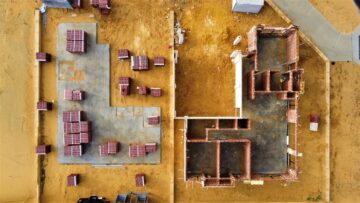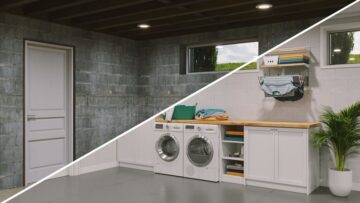
Stucco is favored for its strength, adaptability and simplicity. Yet painting stucco can present challenges, particularly when seeking a smooth result. This article takes a deeper look at stucco’s characteristics and provides guidance on choosing the right primer with a focus on new stucco applications.
Understanding Stucco and its Characteristics

Stucco, a widely appreciated construction material, is popular for its hardiness, the ability to shape and mold it and the pleasing visual effect it provides. In essence, it’s a form of plaster that is made by blending cement, sand, lime and water. The resulting mixture creates a paste that’s applied onto walls and ceilings for the dual purpose of providing protection and enhancing aesthetics.
Stucco is known for its ability to withstand harsh weather conditions, which makes it an ideal exterior coating for homes in various climates. In hot, arid regions, stucco helps keep interiors cool by reflecting sunlight. Conversely, in cold and damp climates, its permeability allows moisture to evaporate from the walls, to help prevent dampness and water damage.
The application process of stucco usually involves three layers:
The first, or “scratch” layer, is applied to a lath (a supportive mesh structure).
A second, or “brown” layer, is then applied.
The third, or “finish” layer, is where the texture and color are applied.
It’s important to note that while stucco is durable, it is not entirely maintenance-free. Over time, cracks may appear due to building movement or impact damage. Regular checks and timely repairs are crucial to avoid water infiltration, which can cause severe problems that make painting or repainting a challenging task.
Challenges of Painting Stucco
Porous Nature of Stucco
The porous nature of stucco can make it absorb paint unevenly, and it often requires more than one coat to achieve a uniform finish.
Uneven Texture
Stucco’s uneven texture can make it difficult to cover every nook and cranny, so it usually requires specialized brushes or rollers.
Susceptibility of Moisture
Stucco’s breathability, while advantageous in some respects, can also make it susceptible to moisture absorption, which can lead to potential water damage if not properly sealed.
The Importance of Priming Stucco
Priming stucco before painting is critical to ensure the longevity and aesthetic appeal of the finish. Given the porous nature and uneven texture of stucco, a primer serves multiple essential roles:

Paint-Adhesion for Long-Lasting Results
It helps create a uniform and non-absorbent surface that enhances paint adhesion and enables even distribution of the paint in order to prevent a blotchy appearance.
Minimizing Moisture Infiltration
A quality primer can help seal the stucco to help reduce its natural susceptibility to moisture absorption and potential water damage.
Mask Surface Stains
Primers can help mask surface stains to provide a cleaner, brighter finish.
Recommended Primers for Stucco
You can use DRYLOK® Extreme Masonry Waterproofer on various types of masonry, including concrete and cinder blocks, stucco, brick and bare concrete swimming pools. It works both indoors and outdoors, above or below ground level and is formulated with flexible encapsulated polymers to provide a beautiful and smooth waterproof finish.
DRYLOK Extreme is made with a biocide that prevents mildew growth on dried, painted surfaces. The product passed ASTM D‑7088 and ASTM D‑6904 tests for resistance to hydrostatic pressure and wind-driven rain. A transferable warranty of 15 years is also included with DRYLOK Extreme.
Preparation and Application of Primer on Stucco
Patch All Cracks and Holes
To achieve a smooth and even finish, it’s necessary to fix any cracks or holes before priming. DRYLOK Fast Plug® is a type of hydraulic cement that sets quickly and can stop active leaks, even under pressure. It’s useful for sealing open joints, large cracks, holes and penetrations in various construction materials like masonry, concrete, block and stucco.
Fast Plug is a high-strength, non-shrink cement that doesn’t require a top coat and can be applied to patch up mortar joints, cracks, holes, and penetrations in masonry walls.
Application of DRYLOK Extreme Waterproofer
Make sure to schedule your project during dry weather, when both air and surface temperatures are 50°F or above. Stir the waterproofer thoroughly before and during use. Apply the first coat to bare masonry using a roller, brush or sprayer and make sure to fill all pores and pinholes. After a drying period of two to three hours, apply a second coat.
Carefully inspect the surface after the second coat and cover any pinholes with an additional coat, if necessary.
Employ the Best Primer for Stucco with DRYLOK
To ensure a top-notch finish when painting stucco, the DRYLOK brand provides reliable solutions. With our Extreme Masonry Waterproofer and Fast Plug, you can overcome the challenges posed by stucco and achieve long-lasting, beautiful results that enhance the appeal of your exterior stucco walls. It’s an investment that adds to the aesthetic appeal and durability of your property.
Contact us today for more information!




